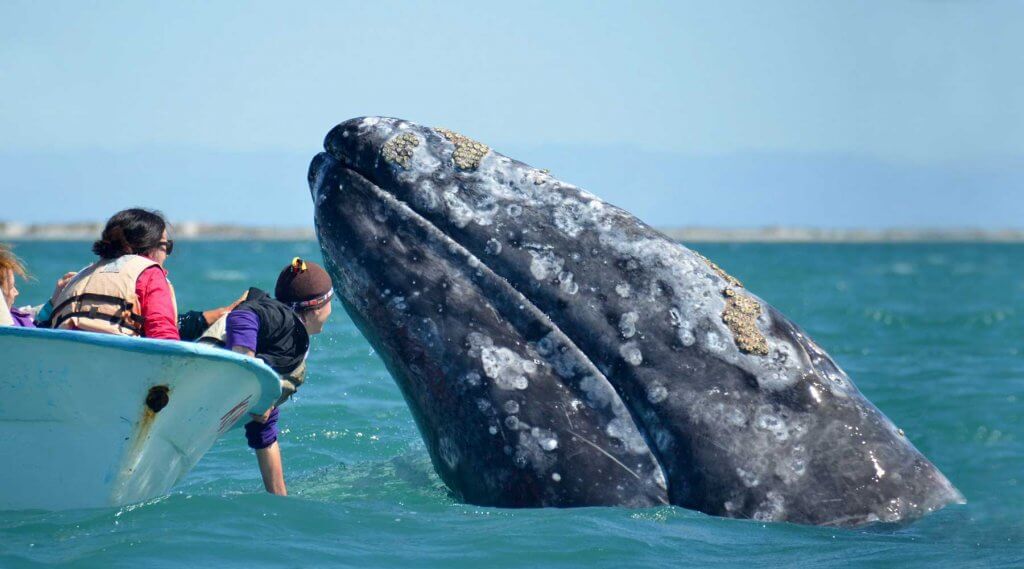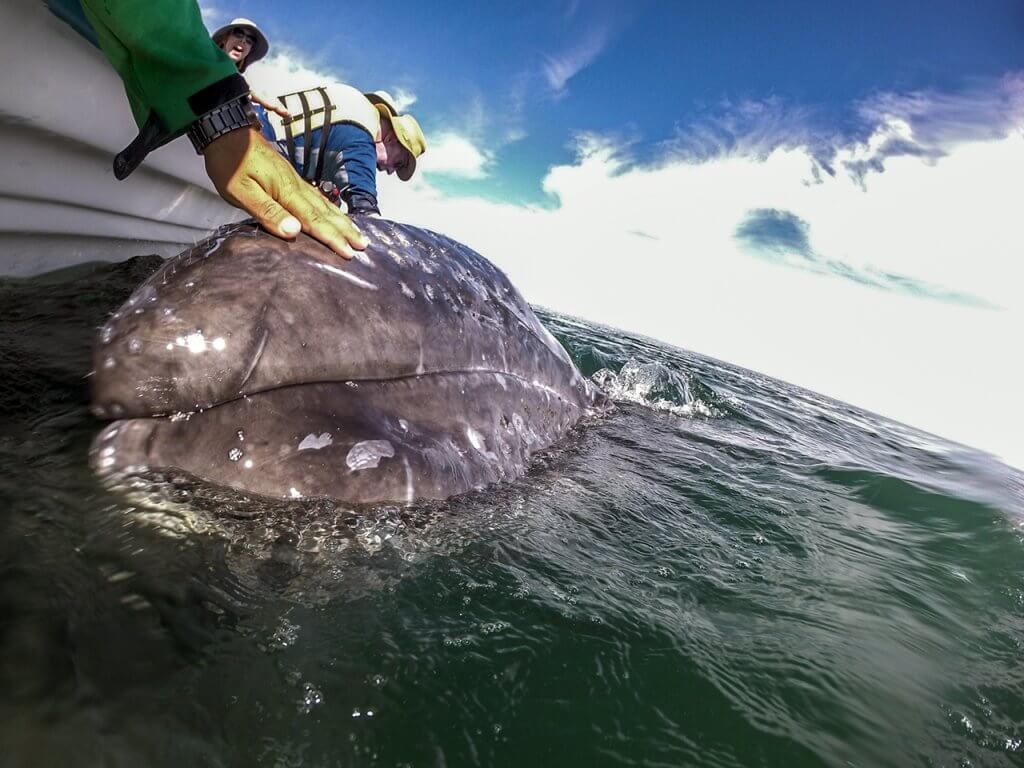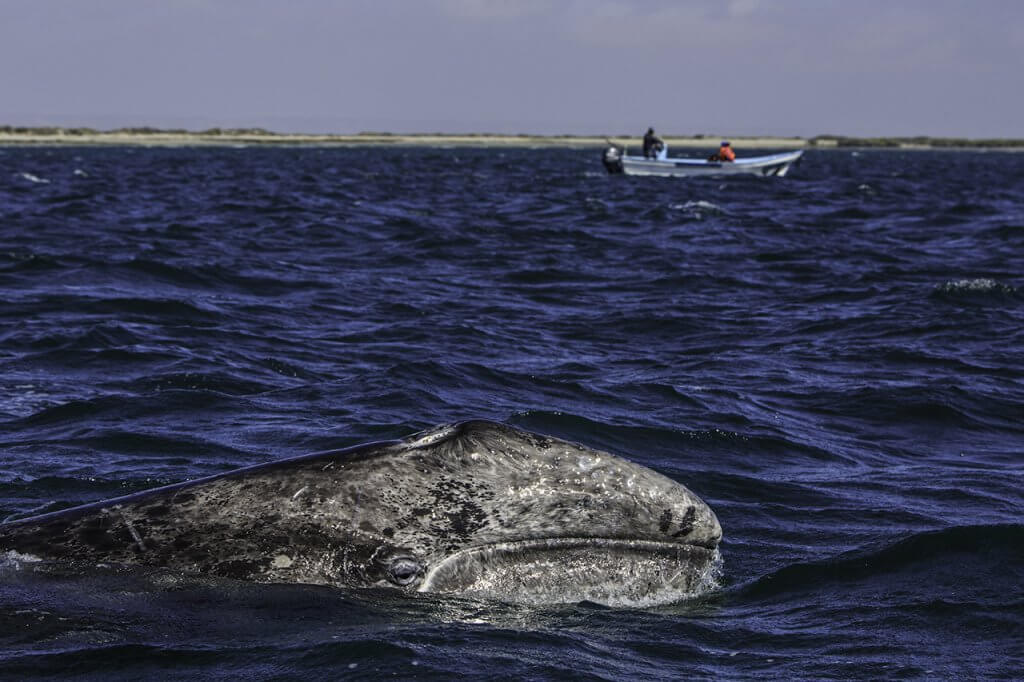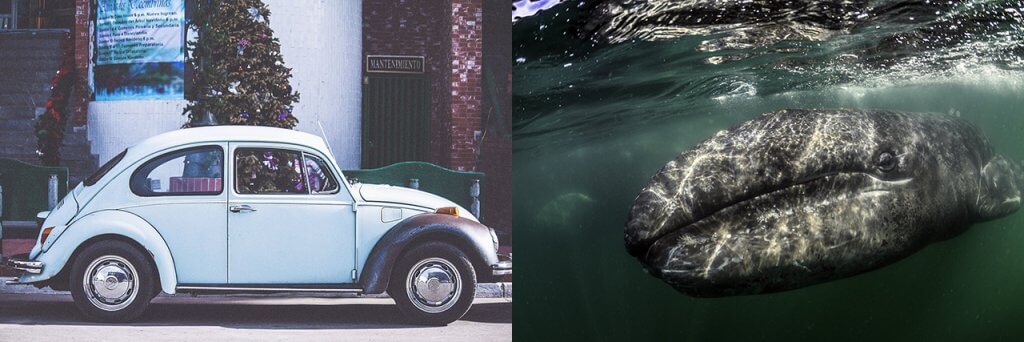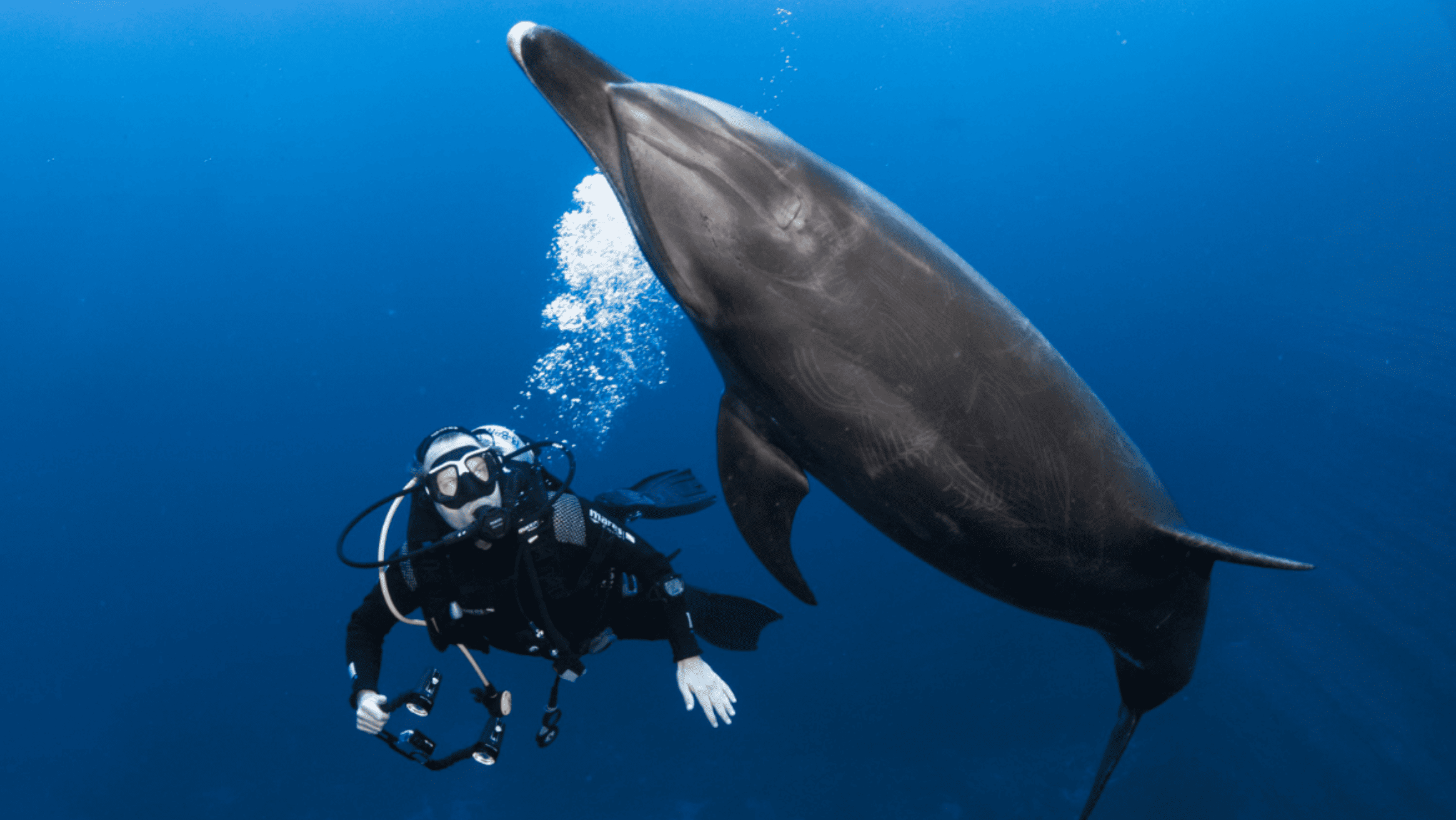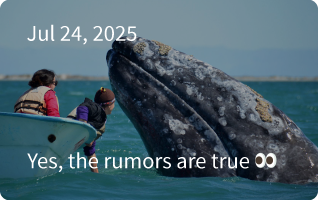Gray Whale Facts: 10 Fun Facts You Didn’t Know
2021-02-04
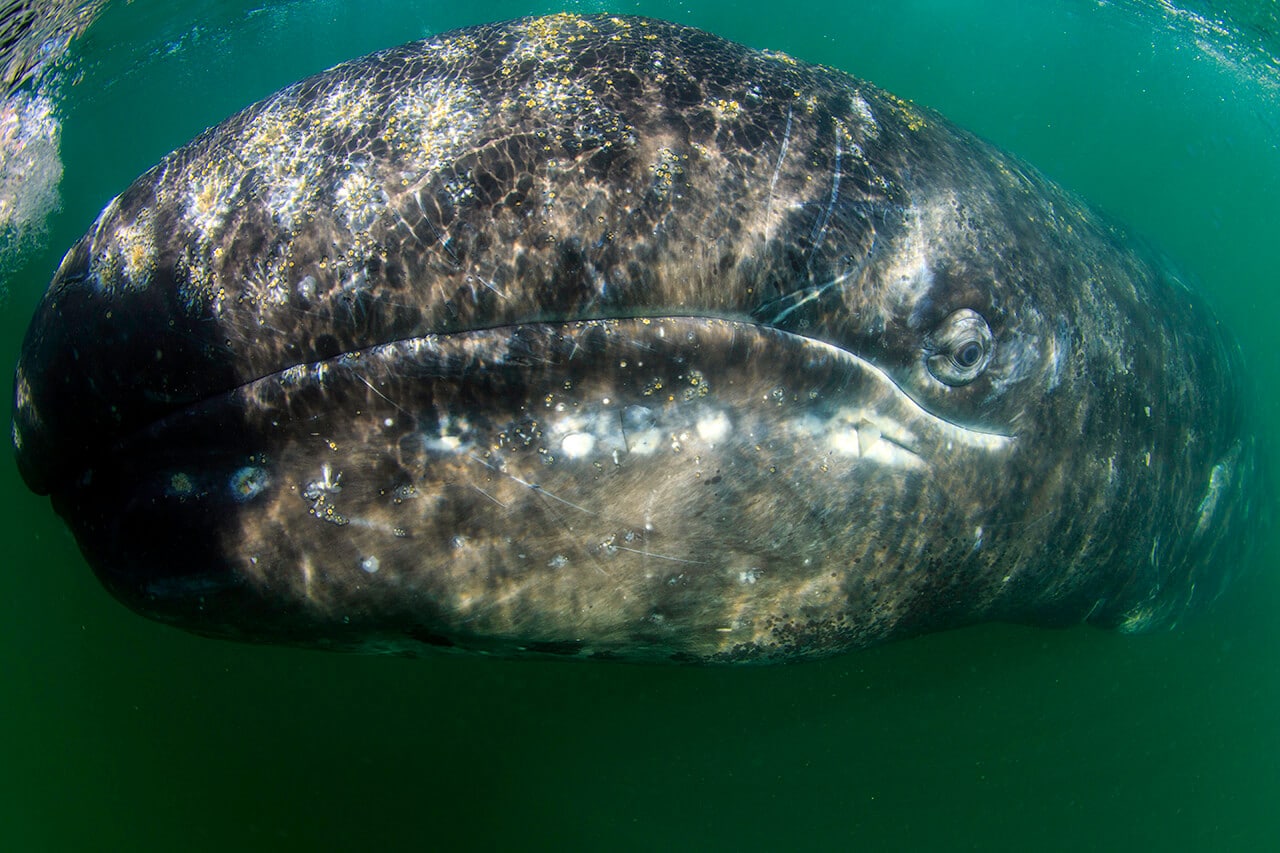
There’s no shortage of amazing gray whale facts to discover, from record-breaking migrations to why they’re known as the friendliest whales on Earth. To celebrate these gentle giants, we’ve pulled together 10 fun facts about gray whales. So if you’re wondering how fast they swim, why they were once called the “devil fish,” or what makes them unique, read on for a Gray Whale 101 you won’t forget.
1. Gray Whale Facts: The Ocean’s 40-Ton Heavyweight
Gray whales (Eshrichtius robustus) reach 40-50 feet in length and can weigh as much as 40 tons. That’s the equivalent of about 8 African elephants or 60 cows! These giants outlive their barnyard counterparts, with an average lifespan of 55–70 years compared to just 22 years for cows.
2. The World’s Longest Mammal Migration
Gray whales hold the record for the longest known migration of any mammal on Earth! Each October, they swim 5,000–6,000 miles from the frigid Arctic Ocean to the warm waters around Baja California Sur. Traveling at a speed of just 2–6 miles per hour, they make their way to San Ignacio Lagoon, where they mate, give birth, and raise their calves. The lagoon is a designated UNESCO Heritage Site, and one of the last undeveloped gray whale birthing sites on the planet—a true sanctuary for these gentle giants and their young.

3. Why Are San Ignacio’s Gray Whales So Friendly?
Usually incredibly shy, the gray whales in San Ignacio Lagoon are unusually curious, and affectionately called the “friendly ones”. While we aren’t sure why, it seems mothers pass this unique whale culture to their young, and being part of it is truly magical. Looking a 45-foot gray whale in the eye is a truly life-changing experience.
4. The Only Place On Earth You Can Pet a Whale
You might have heard whispers about the legendary lagoon, where gray whales swim right up to boats for a curious look—and sometimes even a pat! While wildlife is usually best appreciated from a distance, San Ignacio Lagoon is unique for its close-up whale encounters. Rest assured that protecting this whale nursery comes first and foremost. This means we don’t chase interaction; the whales approach our pangas to be stroked and petted, and they seem to enjoy it just as much as humans do.
Related Reading: ‘Whale Watching in San Ignacio Lagoon: Where the Gray Whales Call the Shots’
5. San Ignacio: Baby Whale Nursery
Most females will begin to calve at around eight to nine years old, and will birth a single calf every two years. Pregnant females are the first whales to arrive in San Ignacio, and their pregnancy lasts 13 months. Gray whale calves are generally born in the sheltered lagoons of Baja California around January. It appears that mothers choose these protected, shallow bays to protect their young from predators, such as sharks and orcas.
6. Newborn Gray Whales
Baby gray whales, otherwise known as calves, are anything but tiny. A newborn tips the scales at around 2,000 pounds and can measure up to 15 feet long. That’s roughly the size of a 1979 Volkswagen Beetle or a pair of grand pianos! Despite their size, calves are still dependent on their mothers, nursing up to 50 gallons of rich, fatty milk every day for about seven months. When leaving Baja’s lagoons, these “babies” need to be strong enough to tackle the long migration north alongside their mothers.
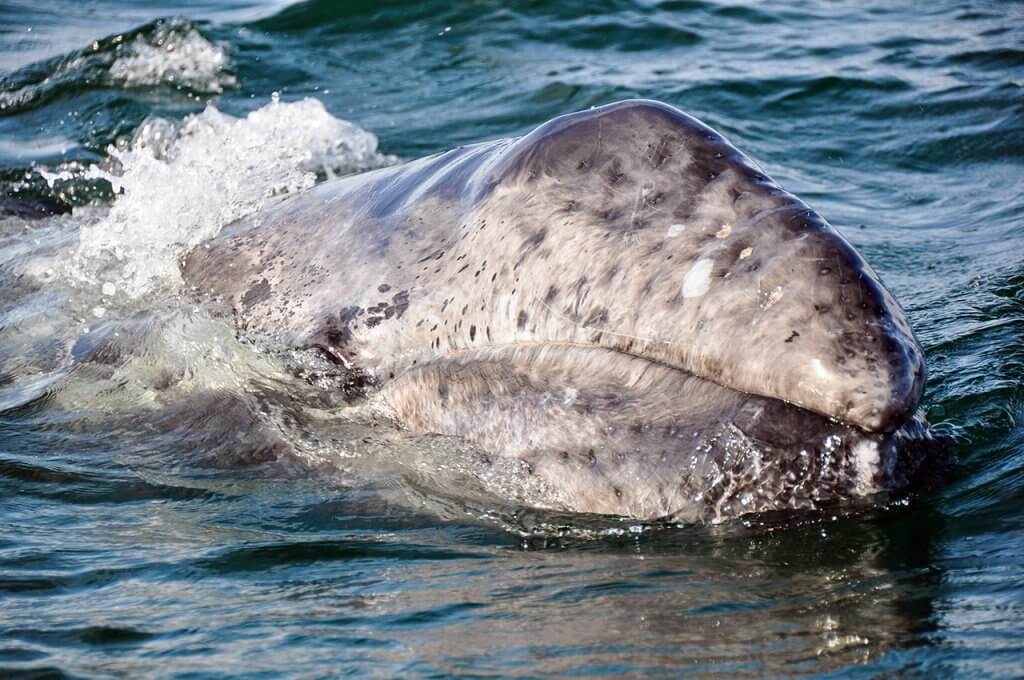
7. Unique Gray Whale Facts: What Sets Them Apart
Gray whales are baleen whales, meaning they filter their food through comb-like plates that hang from the upper jaw. Amazingly, these baleen plates are made of keratin, the same material as human hair and fingernails. Unlike most other baleen whales, gray whales are primarily bottom feeders. They scoop up big mouthfuls of sediment from the seafloor and strain out small crustaceans. However, they are also known to skim plankton from the surface just like other baleen whales, especially in their northern feeding grounds.
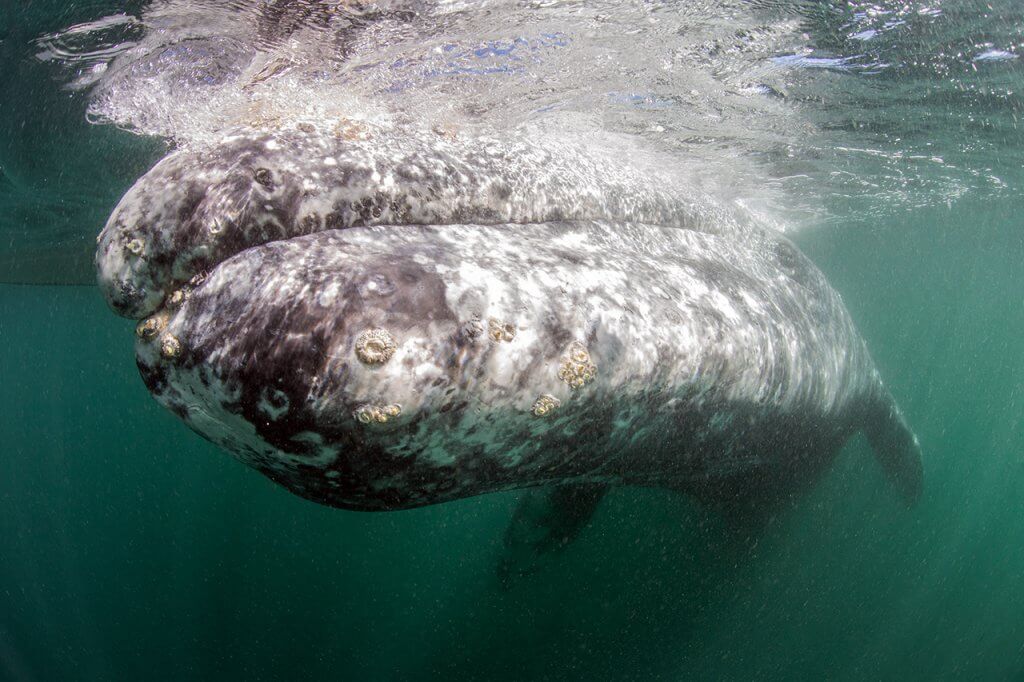
8. No Two Gray Whales Look Alike
You can easily recognize gray whales by their mottled skin, marked with scars, and clusters of barnacles and lice. These rough textures and colorful markings aren’t just striking to see—they’re unique to each individual. Much like human fingerprints, scientists use these patterns to identify and track whales throughout their vast migrations.
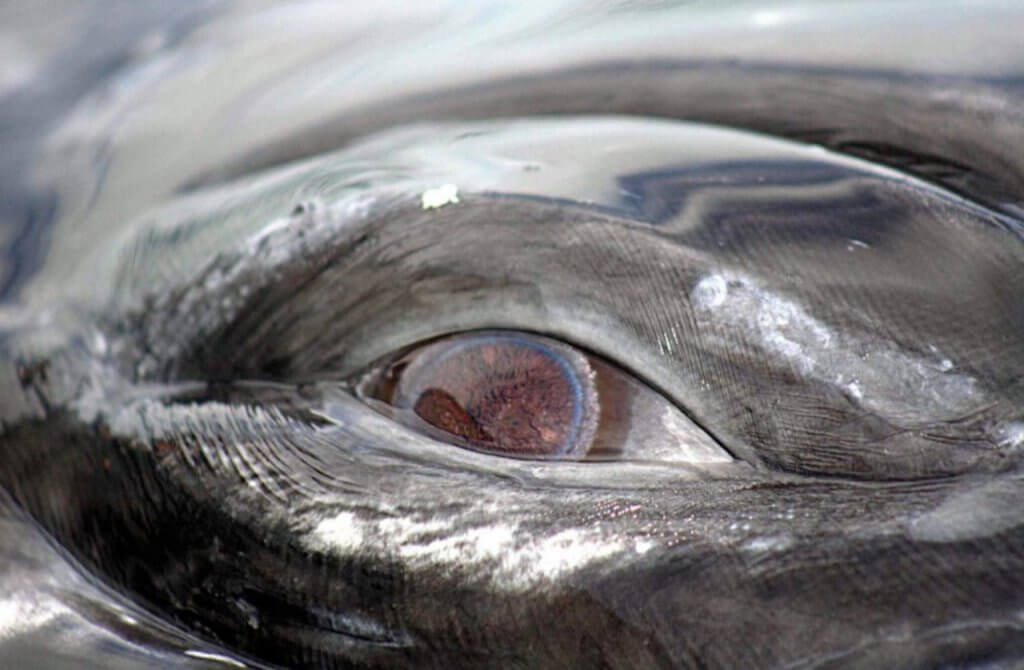
9. The Devil Fish
Back in the 1800s, gray whales were hunted relentlessly, especially in whaling hotspots like Magdalena Bay. Their fierce resistance earned them the nickname “devil fish.” Unlike the gentle giants we know today, these whales fought back against whalers’ harpoons. Mother whales were especially fearless, even ramming boats in defense of their calves. Thankfully, gray whales have been protected from commercial whaling since 1949, and their populations have made a remarkable recovery.
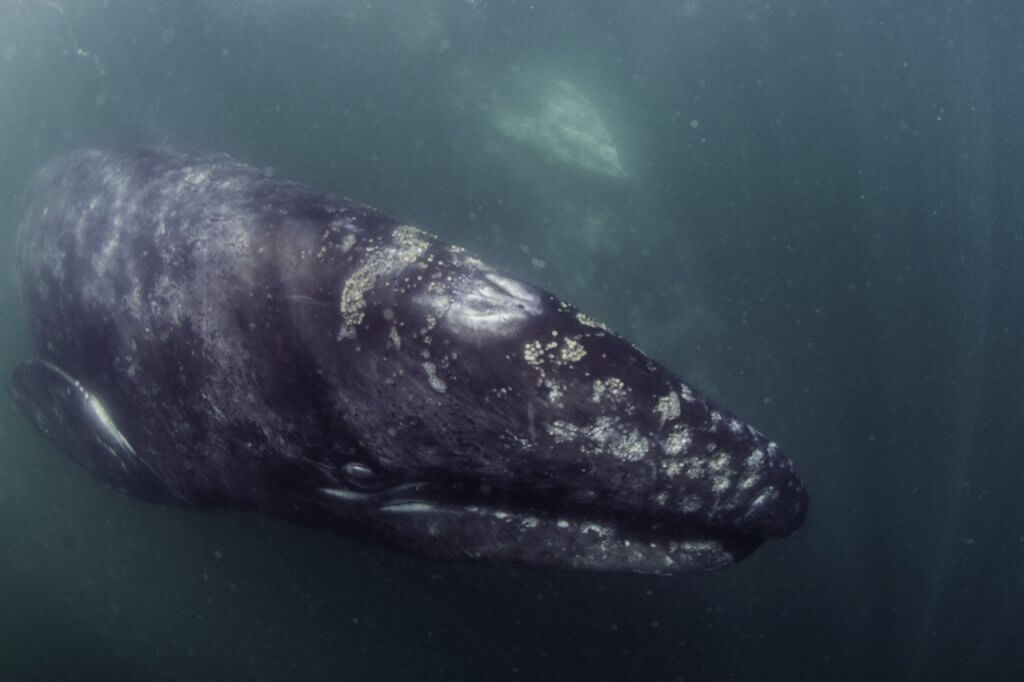
10. Gray Whale Population: A Conservation Success Story
Wondering how many gray whales are left today? The current Eastern North Pacific population has made a remarkable recovery to around 20,000 individuals. It is now considered stable and was removed from the Endangered Species List in 1994. In contrast, Western Pacific gray whales still face threats from fishing and oil and gas exploration. They only number about 250 individuals and are considered critically endangered.
Gray whales never fail to amaze us, and we’re sure there are even more fun facts out there—share your favorites with us!
Want to turn your curiosity into a real-life experience? Discover the magic of San Ignacio Lagoon on a guided whale tour with Baja Expeditions.






